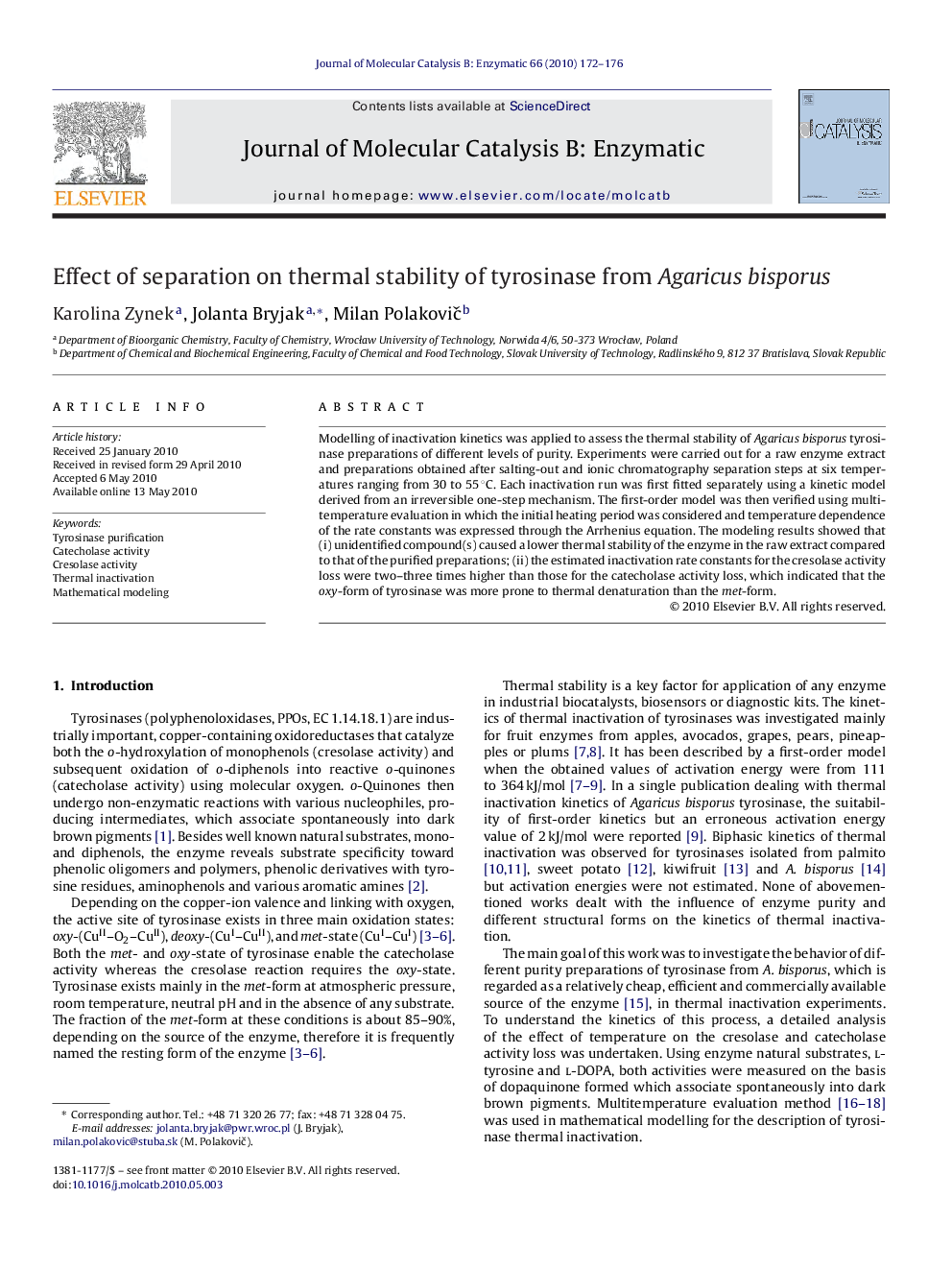| Article ID | Journal | Published Year | Pages | File Type |
|---|---|---|---|---|
| 70418 | Journal of Molecular Catalysis B: Enzymatic | 2010 | 5 Pages |
Modelling of inactivation kinetics was applied to assess the thermal stability of Agaricus bisporus tyrosinase preparations of different levels of purity. Experiments were carried out for a raw enzyme extract and preparations obtained after salting-out and ionic chromatography separation steps at six temperatures ranging from 30 to 55 °C. Each inactivation run was first fitted separately using a kinetic model derived from an irreversible one-step mechanism. The first-order model was then verified using multitemperature evaluation in which the initial heating period was considered and temperature dependence of the rate constants was expressed through the Arrhenius equation. The modeling results showed that (i) unidentified compound(s) caused a lower thermal stability of the enzyme in the raw extract compared to that of the purified preparations; (ii) the estimated inactivation rate constants for the cresolase activity loss were two–three times higher than those for the catecholase activity loss, which indicated that the oxy-form of tyrosinase was more prone to thermal denaturation than the met-form.
